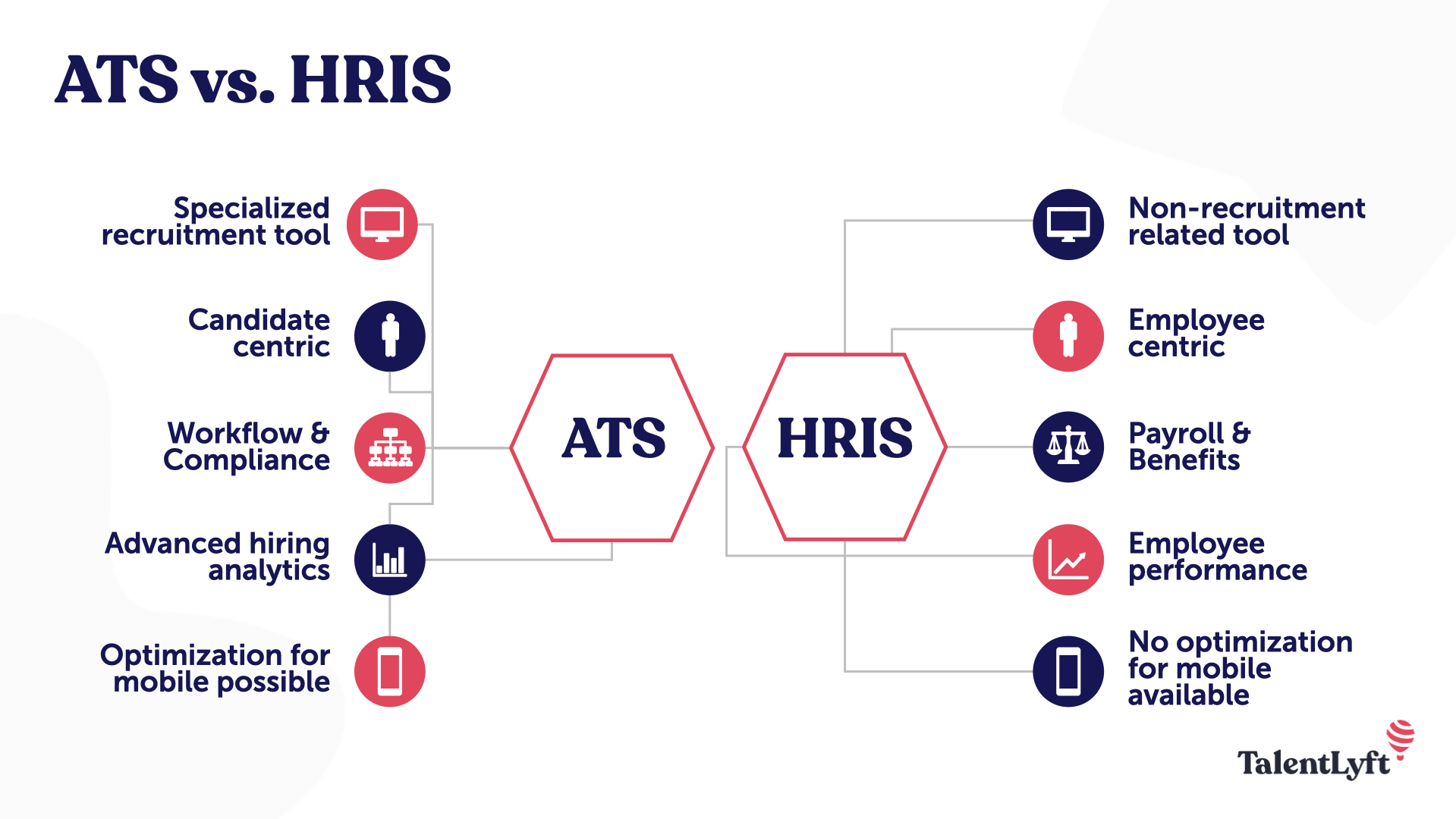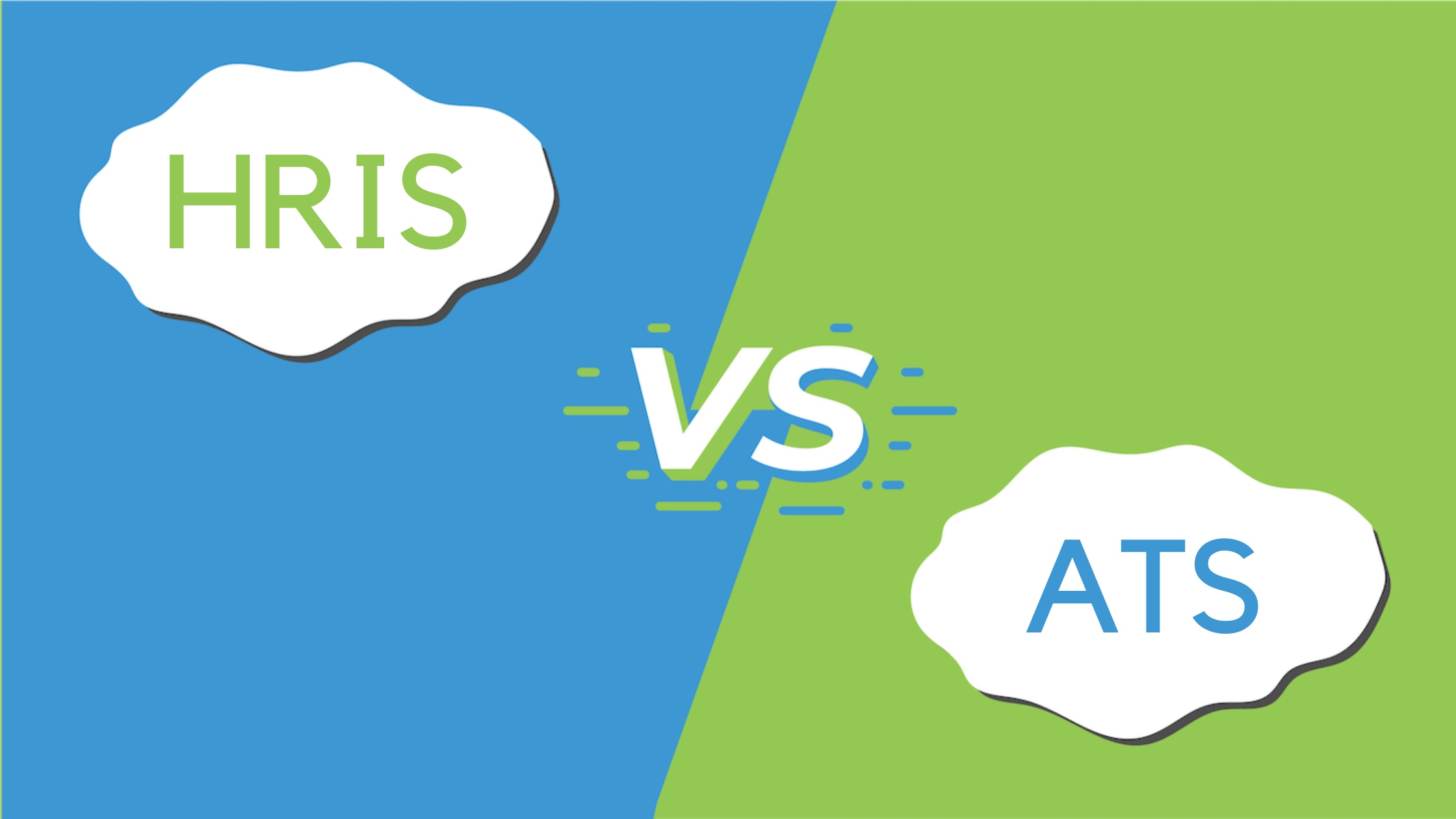ATS HRIS systems are revolutionizing the HR landscape, seamlessly integrating Applicant Tracking Systems (ATS) and Human Resource Information Systems (HRIS) to streamline processes, enhance employee experiences, and drive organizational success.
By harnessing the power of technology, ATS HRIS systems empower organizations to attract top talent, nurture employee growth, and optimize HR operations, ultimately shaping the future of work.
ATS HRIS Systems: An Overview

Applicant Tracking Systems (ATS) and Human Resource Information Systems (HRIS) are essential tools for modern HR departments. ATS helps recruiters manage the hiring process, while HRIS provides a centralized platform for managing employee data and HR processes.
By integrating ATS and HRIS, organizations can streamline their HR processes, improve efficiency, and gain a comprehensive view of their workforce.
Benefits of Using an Integrated ATS-HRIS System
- Improved efficiency: An integrated ATS-HRIS system automates many HR tasks, freeing up HR professionals to focus on more strategic initiatives.
- Increased accuracy: By eliminating manual data entry, an integrated system reduces the risk of errors and ensures that employee data is always up-to-date.
- Enhanced compliance: An integrated system can help organizations comply with complex HR regulations by providing automated reporting and tracking.
- Improved decision-making: By providing a comprehensive view of the workforce, an integrated system can help HR leaders make informed decisions about talent management, workforce planning, and other HR initiatives.
Key Features of ATS HRIS Systems

ATS HRIS systems offer a comprehensive suite of features that streamline HR operations and enhance employee experiences. These features can be categorized based on their functionality, including recruitment, onboarding, performance management, and payroll.
By leveraging these features, HR departments can automate manual tasks, improve data accuracy, and gain insights into employee performance and engagement. Employees, in turn, benefit from a more efficient and user-friendly HR experience.
Recruitment
- Job posting and distribution
- Applicant tracking and screening
- Interview scheduling and management
- Offer letter generation and tracking
These features streamline the recruitment process, reducing time-to-hire and improving the quality of candidates.
Onboarding
- New hire paperwork and document management
- Employee orientation and training
- Performance tracking and feedback
Onboarding features ensure a smooth and efficient transition for new employees, fostering a positive employee experience from the start.
Performance Management
- Goal setting and tracking
- Performance reviews and feedback
- Compensation and benefits management
Performance management features help organizations align employee goals with organizational objectives, identify areas for improvement, and reward top performers.
ATS HRIS systems provide a comprehensive suite of tools to streamline HR processes. Filinvest HRIS, an innovative HR solution , exemplifies the capabilities of ATS HRIS systems. It empowers organizations with features such as payroll management, performance evaluation, and employee self-service, enhancing HR efficiency and effectiveness.
Payroll
- Time and attendance tracking
- Payroll processing and direct deposit
- Tax and benefits administration
Payroll features ensure accurate and timely payroll processing, reducing errors and compliance risks.
Benefits of Implementing ATS HRIS Systems
Implementing an Applicant Tracking System (ATS) and Human Resource Information System (HRIS) offers numerous tangible and intangible benefits to organizations. These systems streamline HR processes, enhance efficiency, and improve employee satisfaction.
Improved Efficiency
ATS-HRIS systems automate repetitive tasks, such as candidate screening, interview scheduling, and employee onboarding. This frees up HR professionals, allowing them to focus on strategic initiatives and provide better support to employees.
- A study by Aberdeen Group found that organizations using an ATS experienced a 50% reduction in time-to-fill positions.
- HRIS systems can automate employee self-service tasks, reducing the workload of HR staff.
Cost Savings
ATS-HRIS systems can help organizations save money in several ways. They reduce the need for manual labor, streamline processes, and improve compliance.
- A study by the Society for Human Resource Management (SHRM) found that organizations using an HRIS system saved an average of $400,000 per year.
- ATS-HRIS systems can help organizations reduce turnover costs by improving employee retention.
Enhanced Employee Satisfaction
ATS-HRIS systems can improve employee satisfaction by providing employees with self-service access to their HR information and by streamlining processes.
- A study by the University of Michigan found that employees who had access to an HRIS system were more satisfied with their jobs.
- ATS-HRIS systems can help employees track their progress, set goals, and access training and development opportunities.
Real-World Examples
Many organizations have successfully implemented ATS-HRIS systems and realized significant benefits. Here are a few examples:
- Google uses an ATS-HRIS system to manage its global workforce of over 100,000 employees.
- Amazon uses an ATS-HRIS system to hire and manage its seasonal workforce of over 100,000 employees.
- Microsoft uses an ATS-HRIS system to manage its workforce of over 150,000 employees.
Challenges of Implementing ATS HRIS Systems

Implementing ATS-HRIS systems can bring significant benefits to organizations. However, it is crucial to acknowledge the potential challenges that may arise during the implementation process. These challenges include data integration, user adoption, and change management.
Data integration involves merging data from multiple sources, such as legacy systems, spreadsheets, and other HR applications. This process can be complex and time-consuming, especially if the data is not standardized or consistent. To overcome this challenge, organizations should invest in data cleansing and standardization tools and establish clear data governance policies.
User Adoption
User adoption is another critical challenge in ATS-HRIS implementation. Employees may be reluctant to adopt new systems due to resistance to change, lack of training, or perceived complexity. To address this, organizations should provide comprehensive training and support to users, involve them in the implementation process, and create a positive and supportive environment for change.
Change Management
Implementing ATS-HRIS systems often requires significant organizational changes, such as new workflows, roles, and responsibilities. This can be disruptive to employees and the organization as a whole. To manage change effectively, organizations should communicate the benefits of the new system clearly, involve stakeholders in the planning and implementation process, and provide ongoing support to employees during the transition.
Best Practices for ATS HRIS Implementation
Successful ATS-HRIS implementation requires careful planning and execution. Best practices include:
-
-*Planning
Define clear goals, secure stakeholder buy-in, and create a detailed implementation plan.
-*Vendor Selection
Evaluate vendors based on their product capabilities, implementation experience, and customer support.
-*Data Migration
Ensure data integrity by thoroughly planning and executing data migration from legacy systems.
-*User Training
Provide comprehensive training to all users to ensure they are proficient in using the system.
-*Ongoing Evaluation and Continuous Improvement
Regularly assess the system’s performance and make necessary adjustments to optimize its effectiveness.
Planning
A comprehensive implementation plan is crucial for success. It should include:
- A clear definition of the project’s goals and objectives
- A timeline for each phase of the implementation
- A budget for the project
- A list of resources that will be needed
- A communication plan to keep stakeholders informed of the project’s progress
Vendor Selection
When selecting a vendor, it is important to consider the following factors:
- The vendor’s product capabilities
- The vendor’s implementation experience
- The vendor’s customer support
- The vendor’s pricing
Data Migration
Data migration is a critical step in the implementation process. It is important to ensure that the data is migrated accurately and completely. This can be done by:
- Creating a data migration plan
- Using a data migration tool
- Testing the migrated data
User Training
User training is essential for ensuring that users are able to use the system effectively. Training should be:
- Comprehensive
- Hands-on
- Tailored to the specific needs of the users
Ongoing Evaluation and Continuous Improvement
Once the system is implemented, it is important to regularly evaluate its performance and make necessary adjustments. This can be done by:
- Monitoring the system’s usage
- Collecting feedback from users
- Making changes to the system based on feedback
By following these best practices, organizations can ensure that their ATS-HRIS implementation is successful.
Case Studies and Examples of ATS HRIS Systems
To provide tangible evidence of the effectiveness of ATS-HRIS systems, we present real-world case studies of organizations that have successfully implemented these systems.
These case studies delve into the implementation processes, challenges encountered, and positive outcomes achieved, offering valuable insights into best practices and lessons learned.
Case Study: ABC Corporation
- ABC Corporation, a global manufacturing firm, implemented an ATS-HRIS system to streamline its HR processes and improve talent management.
- The implementation involved integrating the system with existing legacy systems and training employees on the new platform.
- Key challenges included data migration and ensuring user adoption.
- The system successfully automated HR tasks, improved data accuracy, and enhanced talent acquisition and management.
Case Study: XYZ Healthcare
- XYZ Healthcare, a leading healthcare provider, implemented an ATS-HRIS system to enhance employee engagement and performance management.
- The system provided a centralized platform for employee self-service, feedback, and performance tracking.
- Challenges included resistance to change and ensuring data security.
- The system improved employee satisfaction, increased performance transparency, and facilitated data-driven decision-making.
Future Trends in ATS HRIS Systems
The future of ATS-HRIS systems is bright, with emerging trends and innovations promising to revolutionize HR processes. Artificial intelligence (AI), machine learning (ML), and automation are at the forefront of these advancements, enabling organizations to streamline tasks, enhance decision-making, and improve the overall employee experience.
AI-powered ATS-HRIS systems can automate routine tasks such as resume screening, candidate matching, and interview scheduling, freeing up HR professionals to focus on more strategic initiatives. ML algorithms can analyze vast amounts of data to identify patterns and trends, providing valuable insights for talent acquisition and management.
Impact of AI, ML, and Automation on HR Processes, Ats hris systems
- Improved candidate experience:AI-powered chatbots can provide 24/7 support to candidates, answering questions and scheduling interviews.
- Enhanced decision-making:ML algorithms can analyze candidate data to identify top performers and predict employee turnover risk.
- Increased efficiency:Automation can streamline tasks such as onboarding, payroll processing, and benefits management, saving time and reducing errors.
Predicting the Future of ATS-HRIS Systems
As technology continues to advance, ATS-HRIS systems are expected to become even more sophisticated and integrated. They will likely play a central role in shaping the workplace of the future, enabling organizations to attract, develop, and retain top talent.
Some potential future trends include:
- Increased use of AI and ML:AI and ML will become even more prevalent in ATS-HRIS systems, automating tasks and providing valuable insights.
- Integration with other systems:ATS-HRIS systems will become more integrated with other business systems, such as CRM and ERP systems, providing a comprehensive view of employee data.
- Focus on employee experience:ATS-HRIS systems will increasingly focus on improving the employee experience, providing personalized career paths and development opportunities.
Epilogue
As organizations navigate the ever-evolving HR landscape, ATS HRIS systems emerge as indispensable tools, providing a competitive edge and unlocking new possibilities for workforce management. By embracing innovation and leveraging the transformative potential of these systems, businesses can unlock unprecedented levels of efficiency, employee satisfaction, and organizational growth.
FAQ Summary
What is the primary benefit of using an ATS HRIS system?
Streamlined HR processes, improved efficiency, and enhanced employee experiences.
How do ATS HRIS systems enhance recruitment?
By automating tasks, providing candidate matching, and facilitating collaboration.
What are some common challenges organizations face when implementing ATS HRIS systems?
Data integration, user adoption, and change management.
 HRIS System
HRIS System
